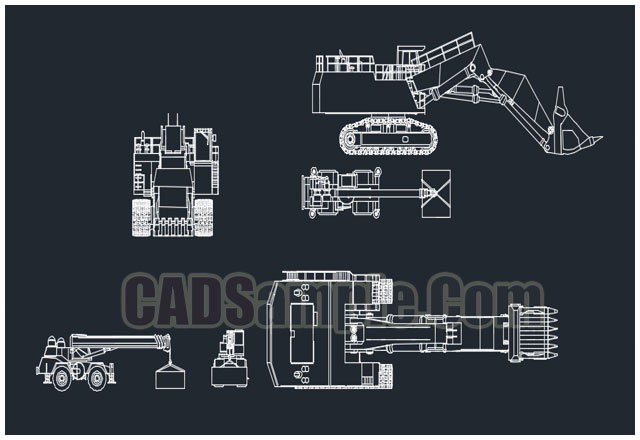Block is very useful as reusable contents. And when you need to create similar objects in your drawing. One of the most popular benefit is when you need to modify all instances, you only need to modify one. All other instance will be automatically updated.
You can remove a block reference from your drawing by erasing it; however, the block definition remains in the drawing's block definition table. To remove unused block definitions and decrease the drawing size, use PURGE at any time in your drawing session. If there is a block on the layer or if objects (such as blocks) are referencing the layer, when you insert a graphic after a block is created, and then you explode or delete it for some reason, even you delete all the visible graphical elements from this layer, you still can't delete the layer, as there are other hidden elements (such as blocks.
We will see four method that you can use to modify your block here.
Explode and recreate the block
This is the oldest way I know, the old school. The classic.
A long time ago, the only way to edit a block is by exploding the block to simpler object. Made any changes necessary, then recreate a block with the same name.
However, it’s not possible to recreate the block if you select the block name from drop down list.
You will see this warning if you select the block name from the list.
You need to type the exact block name in the block name field. Adobe digital editions download 3.0.
If you do it correctly, AutoCAD will ask you for confirmation to redefine the block like below. Select the Redefine block to confirm the changes.
Reinsert the block
Block usually is a reusable content. You create it to use it repeatedly. Because of this reason, you save the block in master file. Whenever you need it, you can simply insert it to your drawing.

If you need to modify the block, then you will want to modify it in master file. But how about the blocks in your drawing?
To update the block definitions in your drawing, you need to insert the updated block to your drawing again. AutoCAD will recognize that the block has the same name with existing block. It will ask you a question like below.
Choose redefine block, and your blocks will be updated.
Using block editor
Block editor is a very powerful tool to edit your block. Not only allow you to modify your block geometry, you can also create a dynamic block here.
You can activate block editor by double clicking a block OR select a block then right click> choose block editor from context menu.
You can also choose edit from AutoCAD ribbon, home tab> block panel.
One thing you must remember. When working with block editor, 0,0 is the insertion point. So don’t move the geometry unless you want to move the insertion point!
Edit block in-place
Edit block in-place is a great way to modify block when you want to use other objects in the drawing as reference. The tool we use is actually REFEDIT. It was originally for reference editing, but works for blocks too.
You can activate this by selecting a block, right click then choose edit block in-place from context menu. Or by using REFEDIT command.
This tool is not block editor. So don’t expect you will see specific block editing tools like in block editor.
Besides the ability to use other objects as reference, there is one more interesting about this method. You can add or remove objects to your block.
Use add or remove from working set from your ribbon.
Don’t forget to click save changes after you finish working with your block.
Which one is your preferred method?
So you have 3 methods to modify block. 4 if you are still using older version. Certainly, which one you use depends on the circumstances. But which one you preferred the most? Which one do you use often?
Autocad Delete Block From File
Or do you have other method that’s not mentioned here?
All references to a block must be erased before you can purge its block definition.
- Click Applicationbutton Drawing UtilitiesPurge.
The Purge dialog box displays a tree view of named objects that can be purged.
- To purge blocks, use one of the following methods:
- To purge all unreferenced blocks, select Blocks. To include nested blocks, select Purge Nested Items.
- To purge specific blocks, double-click Blocks to expand the Block tree view. Select the blocks to be purged.
If the item you want to purge is not listed, select View Items You Cannot Purge.
- You are prompted to confirm each item in the list. If you do not want to confirm each purge, clear the Confirm Each Item to Be Purged option.
- Click Purge.
To confirm the purging of each item, respond to the prompts.
- Select more items to purge, or click Close.